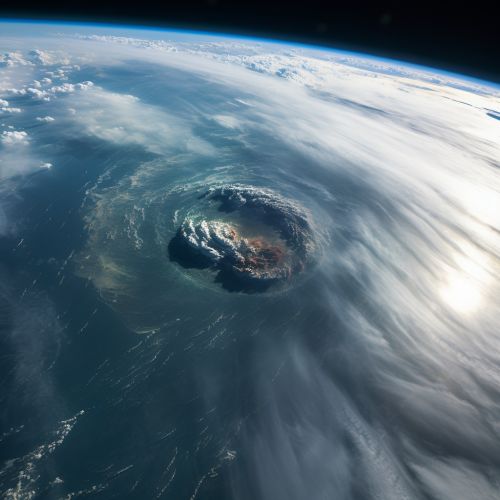Hurricane
Introduction
A hurricane is a powerful, spiraling storm that originates over warm tropical oceans. Known for their destructive potential, hurricanes can cause extensive damage due to high winds, heavy rainfall, and storm surges. The term 'hurricane' is region-specific and is used to refer to tropical cyclones in the Atlantic Ocean and northeastern Pacific Ocean. In other parts of the world, these storms are referred to as typhoons or simply tropical cyclones.


Formation
The formation of a hurricane involves several stages, starting with a disturbance in the atmosphere that leads to a tropical depression. This is followed by the formation of a tropical storm, and finally, under the right conditions, a hurricane. The key ingredient for the formation of a hurricane is warm ocean water, which provides the energy needed for the storm to develop. Other factors include atmospheric moisture, wind patterns, and the rotation of the Earth.
Structure
A hurricane consists of several parts, each playing a crucial role in the storm's development and life cycle. The eye is the calm center of the storm, surrounded by the eyewall, where the most severe weather and highest winds occur. Spiral rainbands extend out from the eyewall, containing heavy rains and sometimes tornadoes.
Classification
Hurricanes are classified according to their wind speed using the Saffir-Simpson Hurricane Wind Scale. This scale ranges from Category 1 (weakest) to Category 5 (strongest). The damage caused by a hurricane increases significantly with each category due to the exponential increase in wind speed.
Impact
The impact of a hurricane can be devastating, leading to loss of life and extensive property damage. In addition to the immediate threat posed by high winds, heavy rain can lead to flooding, and the storm surge can cause coastal flooding. Hurricanes can also have long-term effects on the environment and economy of the affected areas.
Prediction and Preparation
Predicting the path and intensity of a hurricane is a complex task that involves numerous variables. Meteorologists use a variety of tools and techniques, including satellite imagery, radar, and computer models, to forecast hurricanes. Preparation for a hurricane involves both long-term planning and immediate actions as the storm approaches.
Historical Hurricanes
Throughout history, there have been many notable hurricanes that have caused significant damage and loss of life. These include the Great Galveston Hurricane of 1900, Hurricane Katrina in 2005, and Hurricane Maria in 2017.
